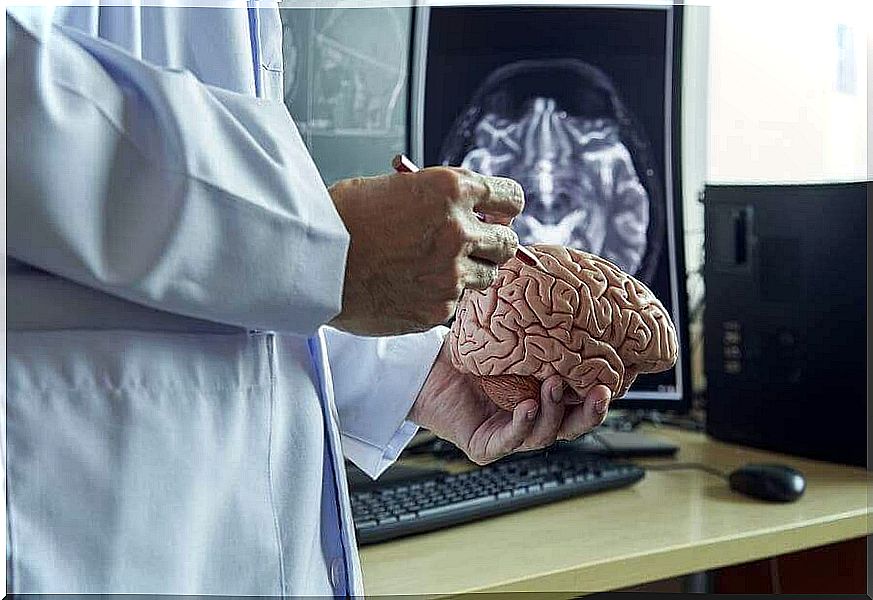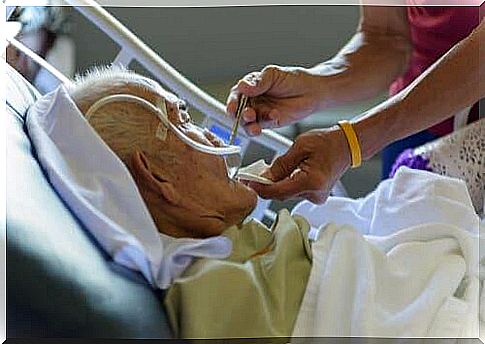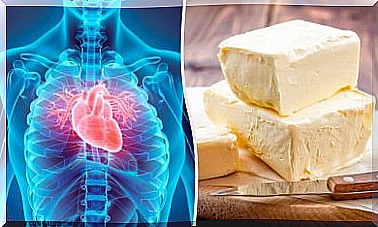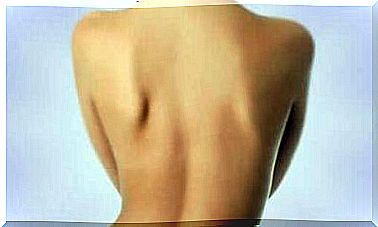Vegetative State: Everything You Need To Know

Many changes can affect a person’s level of consciousness. Vegetative states occupy a prominent place in this broad topic. In the past, a vegetative state was used to refer to unconscious patients whose vital signs were generally replaced.
It wasn’t until the 1970s that two renowned neurologists, Brian Jennet and Freud Plum, scientifically described the condition. Since then, experts have published multiple articles analyzing the vegetative state from different angles. In fact, some controversies are still being discussed.
In this article, we explain the most important aspects you need to know about the vegetative state.
What is a vegetative state?
To explain it better, let’s divide the brain into two parts, depending on what they control:
- The hemispheres of the brain control thoughts and behavior, making us aware of ourselves and our environment. In it we find the different lobes, frontal, temporal, occipital and parietal, with their respective functions, performed by the neurons located in the cortex of the hemispheres.
- The diencephalon, which consists of the thalamus and hypothalamus, and the brainstem regulate vital functions. These include sleep-wake cycles, body temperature, breathing, blood pressure, and heart rate. This part of the brain is our primitive brain.

A vegetative state is a prolonged state that occurs when the hemispheres of the brain stop working. Therefore, the person ceases to be aware of himself and the environment. However, the most primitive brain, which continues its vital functions, is not affected.
The causes of a vegetative state
There are several causes of a vegetative state, as any condition that leads to brain damage can cause this state. Normally it occurs because the function of the brainstem and the diencephalon resumes after it is caused, but the same does not happen with the function of the cerebral cortex or cortical function.
The most common causes are:
- Head trauma, such as a helmetless motorcyclist who sustains a head injury in an accident.
- A condition that deprives the brain of oxygen, such as cardiac or respiratory arrest.
- Cerebrovascular disease, such as a cerebral artery that prevents blood from reaching the brain, leading to a stroke.
Other causes include tumors, bleeding, brain infections, and late-stage dementia, such as Alzheimer’s disease. These conditions do not harm the primitive brain, but they do damage the cerebral cortex.
Symptoms of a Vegetative State
People in a vegetative state can do a number of things that make you think they are aware, such as:
- Open their eyes. The patients can alternate sleeping times when they have their eyes closed with periods when they keep their eyes open.
- They may include breathing, sucking, chewing, coughing, gagging, swallowing, and making noises.
- They may even respond to strong stimuli, such as loud noises, and sometimes appear to smile or frown.
However, the primitive brain performs these actions without any awareness. They are the result of basic involuntary reflexes that all humans have.
How can doctors know they are not conscious?
In order to determine whether a person is conscious, there must be intention in his actions. This intent indicates that they relate to their external environment:
- Although the patient can open and close their eyes and perform eye movements, they serve no purpose. The movements are random and independent of the stimuli. For example, if the patient has his eyes open and you hold a pencil in front of his eyes, he will not follow it with his eyes if you move it.
- The patient does not make voluntary or intentional motor movements. If they make a gesture or lift a limb, it is because they are responding to intense stimuli. For example, they may awaken and have reflexes due to loud noises. The rest of the movements are primitive reflexes, including sucking, chewing, and swallowing.
- They cannot speak or speak. If the patient makes any noise, it is growling or primitive sounds.
- If they are given an oral or written order, they will not follow or respond to it.
- The patient exhibits fecal incontinence and urinary incontinence.
So the patient is not aware of anything. The only thing that continues to function is his heart and lungs. In other words, they can maintain their blood pressure and cardiorespiratory functions.

Diagnosis
Diagnosis is based on evaluation of symptoms by a medical specialist. Although the patient has all the symptoms of a vegetative state, medical specialists must observe the patient for a while to confirm this condition. If this is not done, certain signs of consciousness may be overlooked.
Imaging tests can help discover which part of the brain is affected and see if it can be treated. To see if there is any kind of awareness, doctors resort to tests such as functional magnetic resonance imaging (fMRI) or an electroencephalogram (EEG).
Unfortunately, these tests cannot detect the patient’s level of consciousness. They only detect if there is consciousness that cannot be detected with the naked eye. These results can influence decisions about long-term care and the possibility of recovery or not.
Prognosis vegetative state
In general, it is considered a persistent vegetative state after more than a month. However, experts have determined that the cause of the vegetative state, its duration and the age of the patient are the factors that can change the prognosis.
Some recovery may occur. However, it is usually minimal, with major residual consequences and a poor quality of life.
Therapy
People in a vegetative state require extensive care. Above all, doctors and healthcare providers should take the following measures:
- Preventive measures for problems caused by immobilization. Ulcers or contractures can manifest in the areas they lie on and put pressure on. The blood also stagnates in the veins, which can cause thrombosis or blood clots. To avoid this, the patient must be passively mobilized.
- Good nutrition. This is done through tubes that go through the mouth/nose to the stomach, or directly to the stomach. Nutrients can also be administered intravenously.
- Proper cleaning of all hoses and the patient himself to prevent infections.
The possibility that there is no recovery
These patients are unlikely to recover. Doctors, family members and sometimes the hospital ethics committee must discuss how the patient will be treated.
The patient’s wishes regarding these treatments should also be taken into account , if known or specified in their will.









